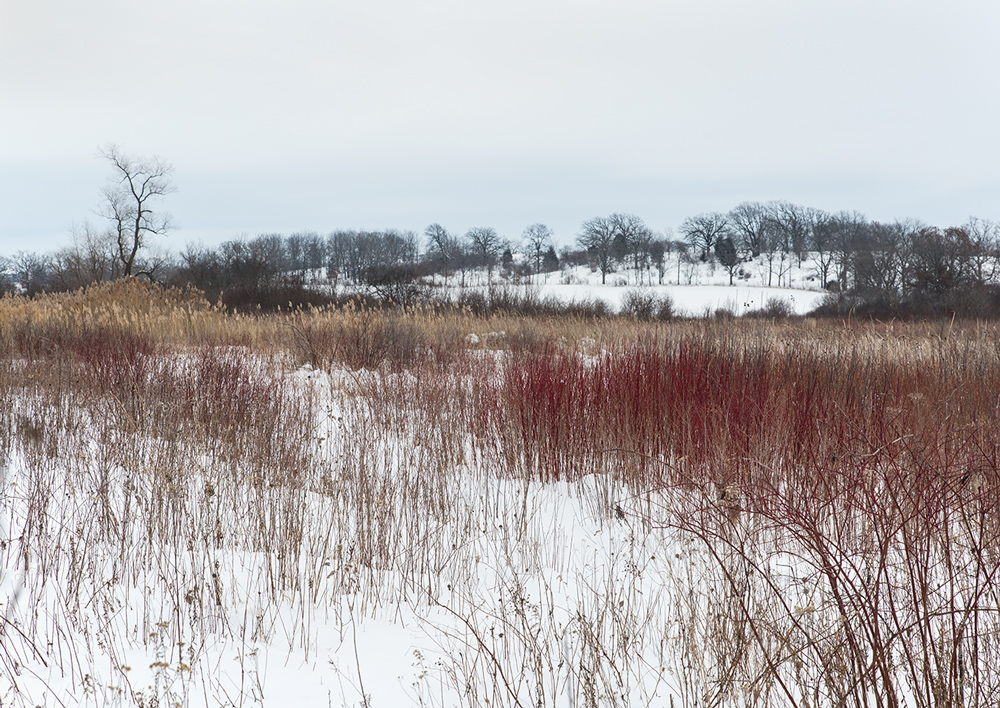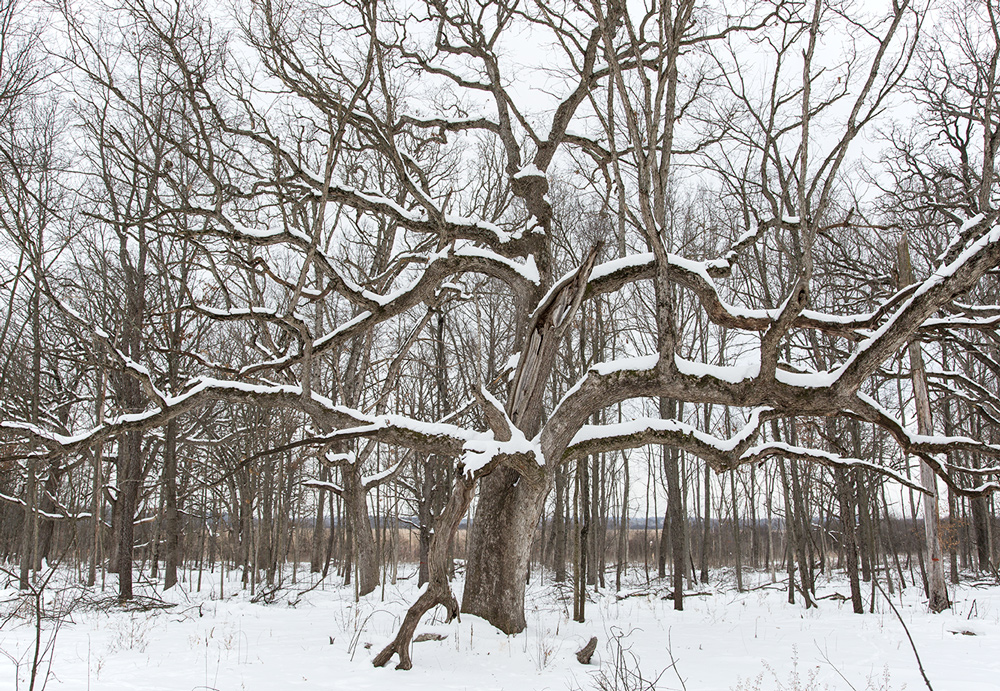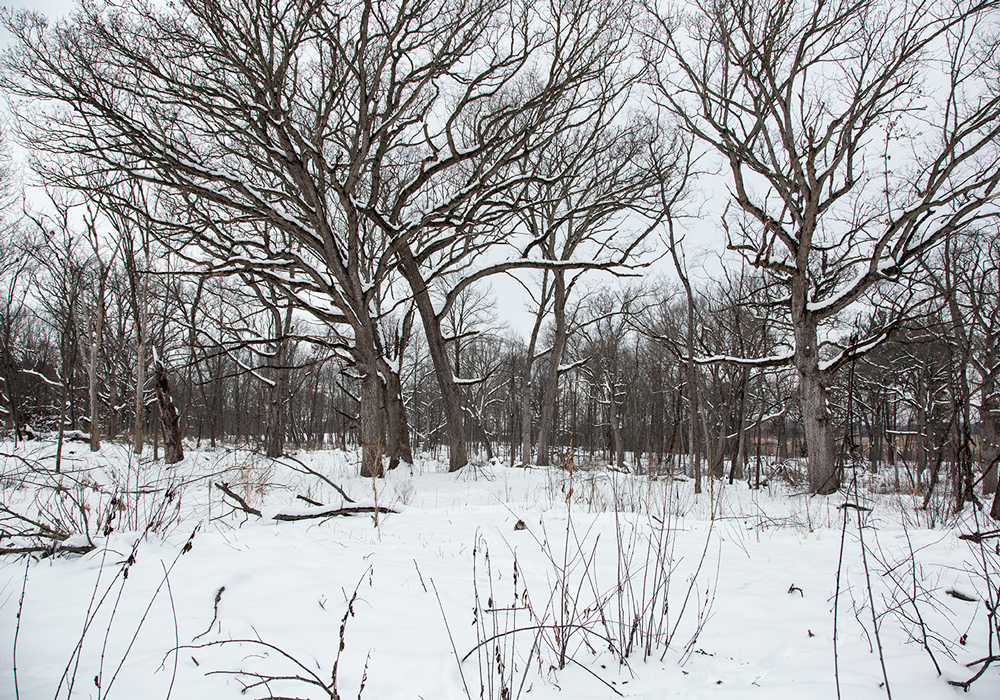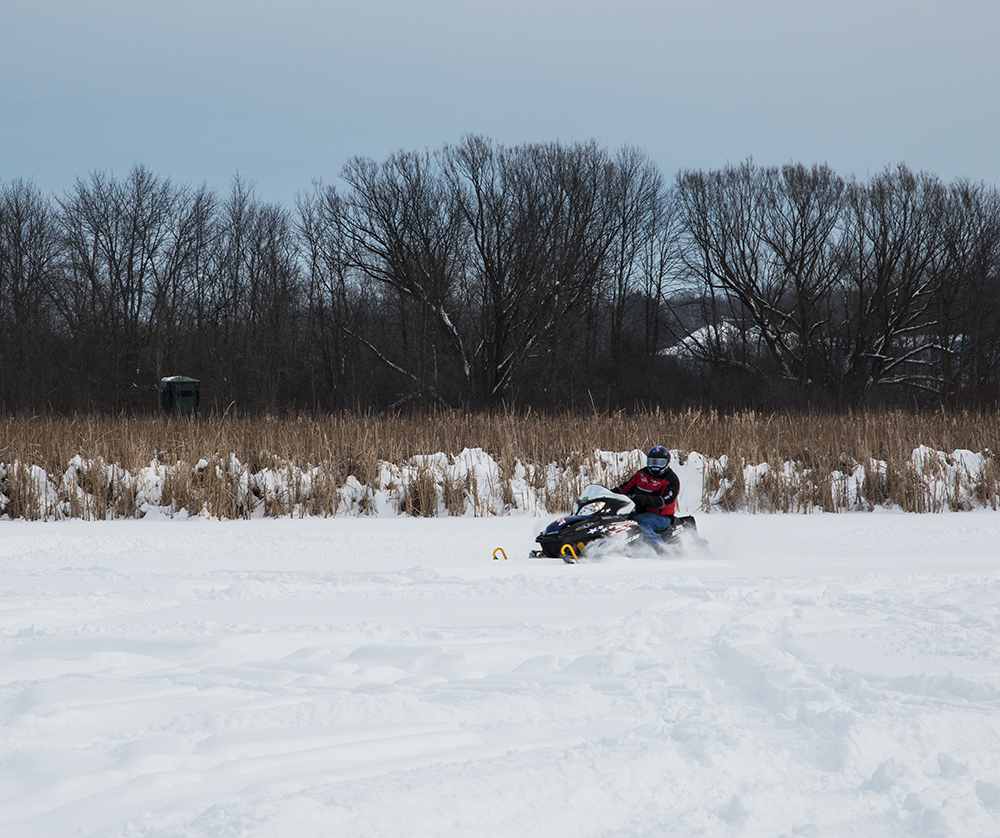
Welcome to Tichigan Wildlife Area: A winter tour of trees
April 19, 2018 | Topics: Places
By Eddee Daniel
Are you looking for a place to get away from it all? Check out one of the many DNR wildlife areas in Southeast Wisconsin. Let me introduce you to Tichigan Wildlife Area, which is southwest of Milwaukee in western Racine County. The thirty-mile drive is easy, making it seem surprisingly close.
Just south of I-43 near Big Bend, Tichigan Wildlife Area can be accessed from Marsh Road, Bridge Drive, North Lake Drive, Highway 83 and Tichigan Road. (See map.) The 1,280-acre property includes the largest emergent marsh in Racine County. The DNR defines an emergent marsh as one “dominated by robust emergent macrophytes, in pure stands of single species or in various mixtures.” In layman’s terms, this means that pretty much everywhere you look you will see the same tall plants growing in water; cattails, for example.

A giant old oak. Photo by Eddee Daniel

Snowmobiles on the frozen Fox River. Photo by Eddee Daniel

The edge of the woodlot. Photo by Eddee Daniel
In addition to cattail marsh, Tichigan Wildlife Area boasts a number of diverse habitats, including grassland, wet meadow, shrubby wetland and oak woodland. Tichigan Creek, a class III trout stream, runs through it. Because the property straddles the Fox River and abuts Tichigan Lake it is also a popular place for other water sports — along with snowmobiling in winter months. In addition to the frozen river, there are snowmobile trails throughout the property.
Wildlife includes deer, turkey, waterfowl and other small game. Pheasants are stocked for hunting. A section of the property is designated as a wildlife refuge that is closed to all during autumn. Check the DNR website for additional details, including complete hunting information and regulations.
Tichigan Wildlife Area is featured in the Lake Michigan Region of the Great Wisconsin Birding and Nature Trail. You might see great egrets, least bitterns, terns, teal, wood ducks, Wilson’s phalaropes and white-rumped sandpipers. Tichigan Wildlife Area also boasts an osprey platform; nesting osprey are a common sight during the summer.

Oak tree seen through a stand of red pines. Photo by Eddee Daniel
In addition to birding, hunting and snowmobiling the DNR advertises a variety of recreational opportunities in all seasons, including canoeing, off-trail cross-country skiing, hiking, trapping, wild edibles/gathering and wildlife viewing.

Guided tour led by DNR biologist Dianne Robinson. Photo by Eddee Daniel
My recent visit to Tichigan was part of a guided tour led by DNR wildlife biologist Dianne Robinson. She gives similar tours on DNR properties throughout Southeastern Wisconsin. The theme of the tour was tree identification. Our small group walked through one of the oak woodlands. Not only did we learn to distinguish between various species of oak but also maple, hickory, red and white pine, and smaller species like red osier dogwood.

The open understory indicates recent timber harvesting. Photo by Eddee Daniel
Robinson introduced us to management issues such as timber harvesting, a.k.a. lumbering. It was easy to tell from the varying densities of the forest where recent cutting had taken place. The oaks, we learned, need light to propagate and benefit from the clearing that results when other species are harvested nearby.
You can join Robinson on one of her regular tours by contacting her at Dianne.Robinson@wisconsin.gov. She has two “Spring Thaw” hikes scheduled this month. The first, at Turtle Valley Wildlife Area in Walworth County, is Mar. 16. The second, at Big Muskego Lake Wildlife Area in Waukesha County, is Mar. 22. Both run from 9:30-11 a.m. Email Robinson for more information and for directions.

Snowmobile on the frozen Fox River. Photo by Eddee Daniel
This story was first published on March 5 2018 at Milwaukee Magazine.
Eddee Daniel is a board member of Preserve Our Parks and the project director for A Wealth of Nature.

